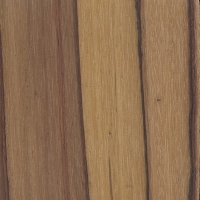 |
Common Name(s): Queenwood Scientific Name: Swartzia spp. Distribution: Peru Tree Size: No data available Average Dried Weight: 58 lbs/ft3 (935 kg/m3) Specific Gravity (Basic, 12% MC): .74, .94 Janka Hardness: 2,170 lbf (9,670 N)* *Estimated hardness based on specific gravity Modulus of Rupture: No data available Elastic Modulus: No data available Crushing Strength: No data available Shrinkage: No data available |
Color/Appearance: Color varies, but is generally a light reddish brown, with sections of darker purplish brown, as well as darker black streaks and veins throughout. Sapwood is a pale grayish brown to cream color, and is sharply demarcated from the heartwood.
Grain/Texture: Fine, even grain, with good natural luster.
Endgrain: Diffuse-porous; large pores in no specific arrangement, few; solitary and radial multiples of 2-3; mineral/gum deposits occasionally present; parenchyma winged, confluent, and reticulate; narrow rays, fairly close spacing.
Rot Resistance: No data available.
Workability: Good workability, turns well. Prone to end checking during drying.
Odor: No characteristic odor.
Allergies/Toxicity: Besides the standard health risks associated with any type of wood dust, no further health reactions have been associated with Queenwood. However, other woods in the Swartzia genus have been reported to cause skin and respiratory irritation. See the articles Wood Allergies and Toxicity and Wood Dust Safety for more information.
Pricing/Availability: Queenwood is a much more recent commercial species, and is only occasionally exported from Peru. Turning blanks and small craft lumber are the most common forms available. Expect prices to be in the mid range for an imported hardwood.
Sustainability: This wood species is not listed in the CITES Appendices or on the IUCN Red List of Threatened Species.
Common Uses: Turned objects, and other small specialty wood items.
Comments: No data available.
None available.


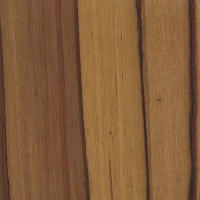
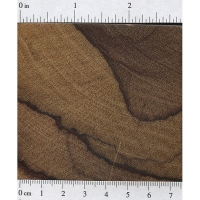
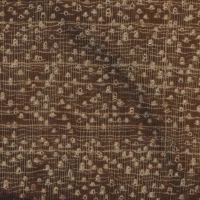
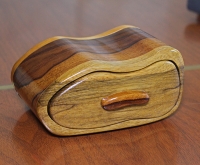
Would the parenchyma be considered unilateral on this?
Is this the same as “Remo caspi”?